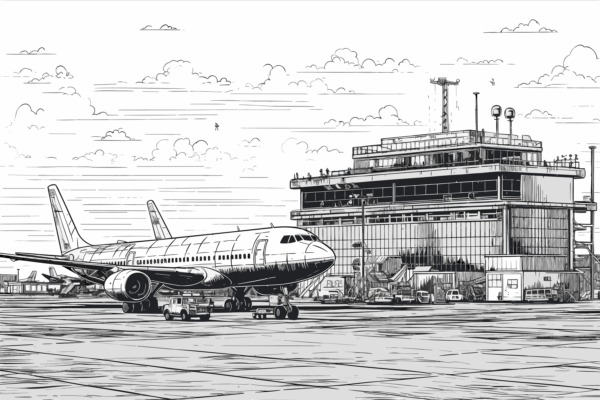

Once complete, the TAP will become an important part of the Southern Gas Corridor, contributing to Europe’s energy security. One of the most important energy infrastructure projects, the pipeline will allow Caspian natural gas to flow into Europe’s energy markets.
According to the Oxford Institute for Energy Studies, the natural gas demand in Europe started to rise in 2015, with the trend continuing into 2016 and 2017, reaching 548 billion cubic meters. This growth is projected to quickly increase over the next five years. Oxford Institute’s report concludes that European Union (EU) laws, including the cap-and-trade Emissions Trading Scheme and new rules for power installations, are pushing the sharing of gas in the EU’s energy mix.
Based on data from the European Commission, the EU imports 69% of its natural gas, with 37% of the imported gas provided by Russia, about 33% from Norway, and 11% from Algeria.
The Trans Adriatic Pipeline (TAP), one of the largest energy sector projects currently ongoing in Europe, is a pipeline designed to transport natural gas. It is also the European leg of the Southern Gas Corridor.
TAP starts in Greece by the Turkish border, where it links with the Trans Anatolian Pipeline (TANAP). From there, TAP crosses the entire territory of Northern Greece, the longest segment, then proceeds onwards from east to west through Albania and the Adriatic Sea, and finally runs subterranean into Southern Italy to connect to the Italian natural gas network. Once complete, TAP will offer a direct transportation route to connect with other parts of the Southern Gas Corridor, a 3,500 kilometers (km) long gas value chain stretching from the Caspian Sea to Europe.
The onshore sections of TAP will be approximately 773 km (Greece 550 km; Albania 215 km; Italy 8 km). The pipeline will be concealed once built, buried at least one meter beneath the ground. Only facilities such as the pipeline receiving terminal, compressor, and block valve stations will be above ground, designed and constructed with minimal visual and environmental impacts. TAP’s highest elevation will be 2,100 meters in the mountains of Albania.
TAP will traverse the Adriatic Sea at the shortest crossing, between Fier in Albania and Italy’s southern Puglia region, a distance of 105 km. This route accounts for strict environmental protection requirements and the ecosystem of the Adriatic seabed. The deepest point of the pipeline below sea level will be 820 meters in the Strait of Otranto.
TAP’s initial capacity of 10 billion cubic meters (bcm) of gas per year is equal to the energy consumption of approximately 7 million households in Europe. In the future, the anticipated addition of two extra compressor stations could double the amount to 20 bcm as more energy supplies come on stream in the wider Caspian region.
The project is currently in the construction phase, which started in 2016. Every day hundreds of meters of TAP’s Right of Way (ROW) are cleared and pipe is strung, welded, lowered into the trenches, and backfilled according to scope specifications and schedule. At the end of the second quarter of 2018, the TAP project was more than 76% completed.
TechnipFMC Italy has been awarded a contract by TAP for certain project management services under the TAP integrated project management team.
Hill International is currently implementing a contract for Technipetrol Hellas S.A., a subcontractor of TechnipFMC Italy (previously an affiliate), to provide project manpower support in connection with construction of the TAP.
Find out the latest news regarding TAP by visiting the project website at https://www.tap-ag.com/
Share

April 11, 2024 | Articles
A Model Move: Managing Move-In at the Sylvia H. Rambo U.S. Courthouse

April 8, 2024 | Articles

April 4, 2024 | Articles
Driving Growth and Seizing Opportunity: Lukasz Marcinkiewicz Joins Hill as Country Manager, Poland

April 1, 2024 | Articles

March 27, 2024 | Articles
Building the Future: Women’s Leadership and Community Engagement in the Construction Industry

March 25, 2024 | Articles
Leveraging Data Analytics and Dashboards for Enhanced Project Performance

February 26, 2024 | Articles
Continuity, Creativity, and Collaboration: Delivering PennDOT’s Route 18 Signal Upgrade
We and use cookies and other tracking technologies to improve your experience on our website. We may store and/or access information on a device and process personal data, such as your IP address and browsing data, for personalised advertising and content, advertising and content measurement, audience research and services development. Additionally, we may utilize precise geolocation data and identification through device scanning.
Please note that your consent will be valid across all our subdomains. You can change or withdraw your consent at any time by clicking the “Consent Preferences” button at the bottom of your screen. We respect your choices and are committed to providing you with a transparent and secure browsing experience.
| Cookie | Duration | Description |
|---|---|---|
| cookielawinfo-checbox-analytics | 11 months | This cookie is set by GDPR Cookie Consent plugin. The cookie is used to store the user consent for the cookies in the category "Analytics". |
| cookielawinfo-checbox-functional | 11 months | The cookie is set by GDPR cookie consent to record the user consent for the cookies in the category "Functional". |
| cookielawinfo-checbox-others | 11 months | This cookie is set by GDPR Cookie Consent plugin. The cookie is used to store the user consent for the cookies in the category "Other. |
| cookielawinfo-checkbox-necessary | 11 months | This cookie is set by GDPR Cookie Consent plugin. The cookies is used to store the user consent for the cookies in the category "Necessary". |
| cookielawinfo-checkbox-performance | 11 months | This cookie is set by GDPR Cookie Consent plugin. The cookie is used to store the user consent for the cookies in the category "Performance". |
| viewed_cookie_policy | 11 months | The cookie is set by the GDPR Cookie Consent plugin and is used to store whether or not user has consented to the use of cookies. It does not store any personal data. |


